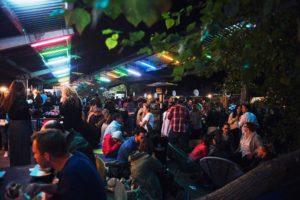Fodor's Expert Review Rynek Starego Miasta
This is the hub of life in Warsaw's Old Town. The earliest settlers arrived at this spot during the 10th and 11th centuries. Legend has it that a peasant named Wars was directed to the site by a mermaid named Sawa—hence the name of the city in Polish, Warszawa. (Sawa has been immortalized in Warsaw's official emblem.) In the 14th century Warsaw was already a walled city, and in 1413 its citizens obtained a borough charter from the princes of Mazovia. The present layout of the Old Town dates from that time, and traces of the original Gothic buildings still surround the Old Town Square. The appearance of today's square, however, largely dates from the 16th and early 17th centuries, when Warsaw's wealth and importance grew rapidly as a result of the 1569 Polish-Lithuanian union and Warsaw's new status as Poland's capital city.
The Old Town Square is usually very active, even though no traffic is allowed and there is no longer a formal market. Artists and craftspeople... READ MORE
This is the hub of life in Warsaw's Old Town. The earliest settlers arrived at this spot during the 10th and 11th centuries. Legend has it that a peasant named Wars was directed to the site by a mermaid named Sawa—hence the name of the city in Polish, Warszawa. (Sawa has been immortalized in Warsaw's official emblem.) In the 14th century Warsaw was already a walled city, and in 1413 its citizens obtained a borough charter from the princes of Mazovia. The present layout of the Old Town dates from that time, and traces of the original Gothic buildings still surround the Old Town Square. The appearance of today's square, however, largely dates from the 16th and early 17th centuries, when Warsaw's wealth and importance grew rapidly as a result of the 1569 Polish-Lithuanian union and Warsaw's new status as Poland's capital city.
The Old Town Square is usually very active, even though no traffic is allowed and there is no longer a formal market. Artists and craftspeople of all kinds still sell their wares here in the summer, but don't expect many bargains—tourists are their prime targets. Musical performances are often held here on weekends on a stage erected at the north end of the square. Horse-drawn cabs await visitors. To explore some of the square's beautiful and historic houses, visit the Muzeum Literatury im. Adama Mickiewicza on the east side of the square and the Muzeum Historyczne Warszawy on the north side. After being almost completely annihilated during World War II, these mansions were meticulously reconstructed using old prints, plans, and paintings. For some of the best Gothic details, look for No. 31, traditionally known as the House of the Mazovian Dukes. At night the square is lit up romantically. If you're after good food and atmosphere, this is one of Warsaw's best places to hang out after dark.
Krzywe Koło (Crooked Wheel Street) runs from the Old Town Square to the reconstructed ramparts of the city wall. From this corner you can see out over the Vistula and also over the New Town stretching to the north beyond the city walls. As you look out over the town walls and down the Vistula embankment, you will see the Stara Prochownia (Old Powder Tower), now a popular venue for poetry readings, music, and drama.
READ LESS






